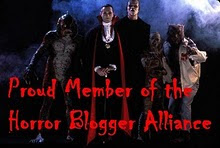Starring: Gloria Stuart, Melvyn Douglas, Raymond Massey, Lilian Bond, Charles Laughton, Ernest Thesiger, Eva Moore, Bremer Wills and Boris Karloff
Director: James Whale
Rating: Nine of Ten Stars
A violent storm forces five travelers to take shelter in an isolated house in the Welsh mountains. Before the night is over, love will come to some of the inhabitants of the house, while death will come for others.

"The Old Dark House" is a quirky horror film from the days when the genre was still taking shape. It features an even mix of romance, dark comedy and melodramatic horror action in a household so riddled with insanity that even the House of Usher looks like the Cleavers by comparison. It's a tone and mixture of elements that has only rarely been achieved, with films like "Drag Me to Hell" and "Dead Alive" coming closest in the past decade.
When it was first released, it failed to appeal to the public nor to most critics, due in a large part to a marketing campaign that centered on Boris Karloff, who had just been featured in the mega-hit "Frankenstein." Marketing and top billing aside, Karloff's role in this film is rather minor, and he is more red herring than monster. Although a definate ensamble piece, the actors who fill the key roles in the flick are Gloria Stuart, whose character is threatened in turn by every one of the menacing figures in the old dark house; Melvyn Douglas, whose roguish war veteran character is the heroic and romantic center of the film; and Bremer Wills, whose late-arriving character is nonetheless the most memorable in the entire picture.
Although those three actors are the lynchpins keeping the film together, everyone does a remarkable job. Also of particular note are Lilian Bond, who is perhaps better here than in any other film she would make; Charles Laughton, who actually sympathetic for once; and Ernest Thesiger, who manages to be funny and scary at the same time.
The staging of each shot is also remarkable, as is the attention paid both to the visual composition of each scene, as well as the careful deployment of sound throughout. There is no music score for the film, but the sounds generated by the storm raging outside the house provide far more drama than any orchestra could do.
Because the film was a commercial disaster both in 1932 and during its re-release in 1939, Universal Pictures considered it worthless. They sold remake rights to Columbia Pictures and let all of its rights revert to estate of the novelist whose work the film had been based on in 1957, and the negatives were left to rot in storage in New York City. If not for a concerted effort on the part of filmmaker Curtis Harrington--a fan of the film and friend of director James Whale--it might have been lost forever by the late 1960s. Even the best available print shows some damage, despite the restoration efforts.

Fortunately, the film has been now digitized and released on DVD for all of us to enjoy again and again. And this is a film that has definate replay value, as there are many subtle interplays between characters and stylistic touches that might not be noticed on the first time through. Also, the careful composition of scenes and use of sound make it as worthy of study as more celebrated early horror films, like "The Mummy" or "White Zombie."
Or it's worth seeing again and again for the excellent performances. Based on the job she does here, it's a shame that Gloria Stuart was not given any further decent parts at Universal and an even bigger shame that she basically quit acting in 1939.












No comments:
Post a Comment